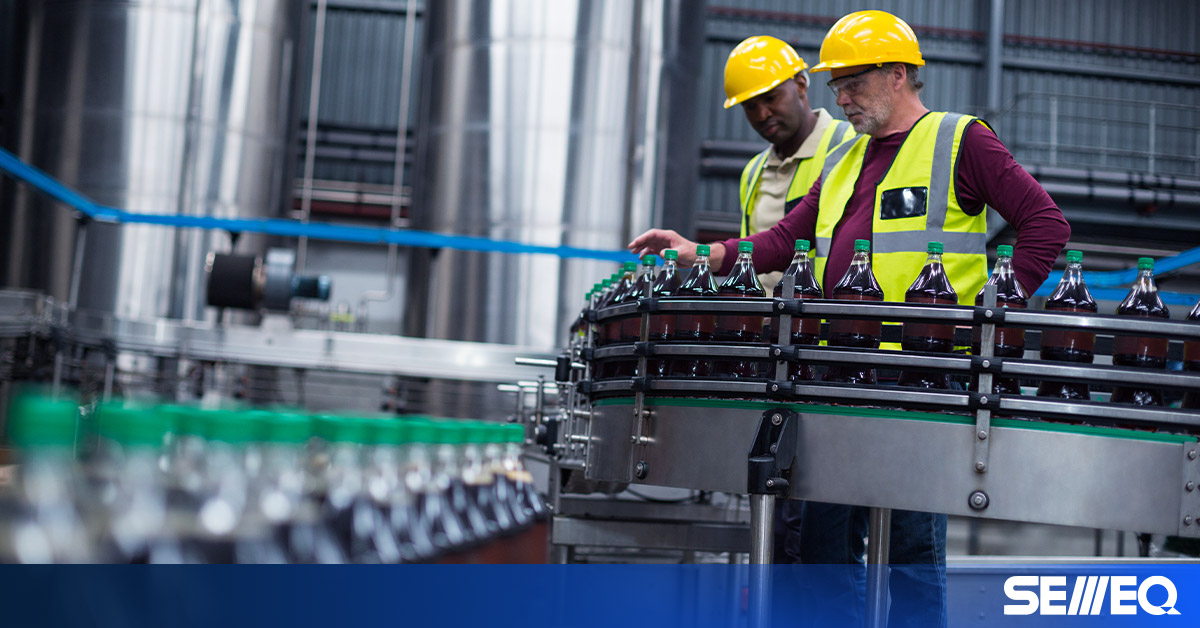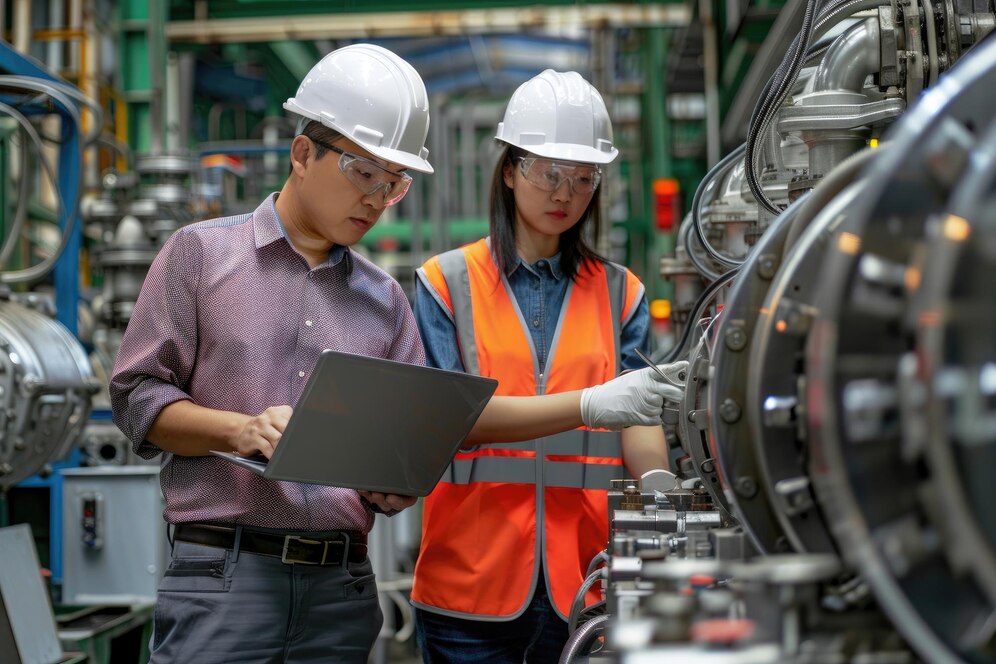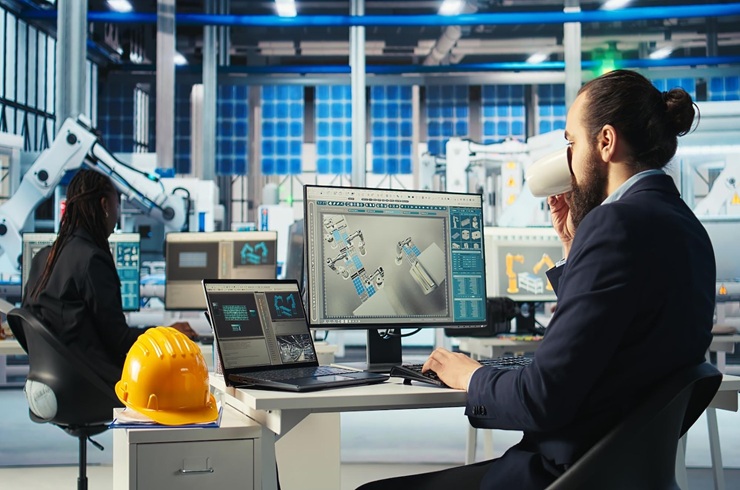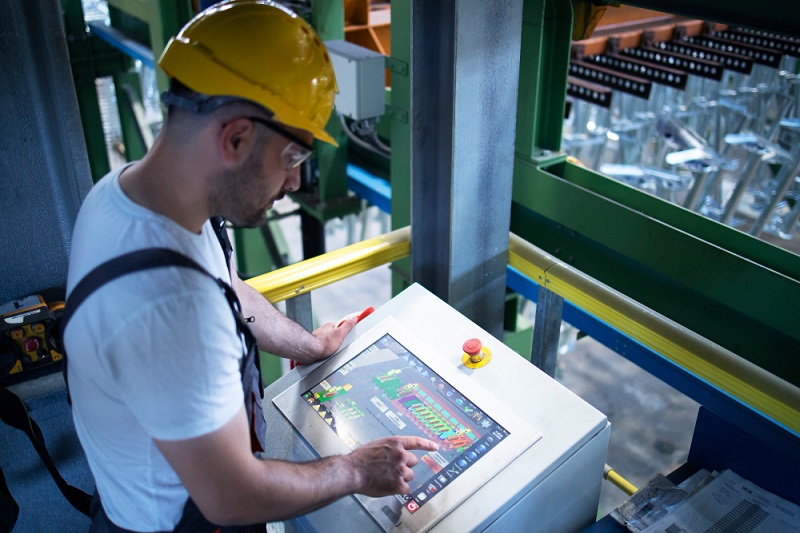Technology plays an increasingly important role in today’s industrial landscape. One innovation that has profoundly transformed the food industry is predictive monitoring.
This approach uses sensors, real-time data, and advanced analytics to predict equipment failures, optimize maintenance, and improve operational efficiency.
In this article, we’ll explore in detail how to apply predictive monitoring in food and beverage plants, discussing its benefits, challenges, and best practices for effective implementation.
Main Challenges in Food Industry Plants
Maintenance in food industry plants faces several critical challenges to ensure operational continuity and product quality. Some of the main ones include:
Risk Management
Risk management is a crucial challenge in maintaining food industry facilities. Operations inherently involve risks, making it essential to implement strict safety measures to protect both equipment integrity and worker safety.
A solid safety program should include detailed risk assessments, identification of potential hazards, creation of standard operating procedures (SOPs), and regular staff training.
Moreover, predictive monitoring in the food and beverage industry is vital to mitigate the risk of failures and accidents.
Asset Management
Asset management is another major challenge in maintaining industrial facilities. Keeping equipment and machines functional is key to ensuring consistent performance over time. However, this requires careful planning and efficient execution.
A data-driven approach is the best way to address this challenge. By collecting equipment data, it’s possible to monitor performance, detect early-stage issues, and make informed decisions.
Resource Availability
Maintenance requires a wide range of resources—labor, tools, equipment, and materials. Ensuring that these resources are available when needed can be difficult.
An effective way to address this is to create a detailed maintenance plan that allocates resources efficiently, ensuring that everything required is ready before execution.
Regulatory and Sanitary Compliance
In the food and beverage industry, maintaining compliance with strict sanitary regulations is a constant challenge.
Any equipment failure can compromise hygiene and product safety—leading to fines, recalls, and damage to brand reputation.
Predictive monitoring ensures that equipment operates within required standards, reducing contamination risk and maintaining product quality.
Online Predictive Monitoring: The Key to Enhancing Plant Performance
Predictive monitoring in the food and beverage industry uses sensors and analytics to predict equipment failures before they occur. This helps to:
- Prevent unplanned downtime
- Reduce equipment damage
- Extend the machine’s useful life.
- Reduce energy consumption
- Improve worker safety
- Minimize environmental impact
- Enhance product quality and consistency, especially on bottling and packaging lines.
Periodic monitoring using vibration, ultrasound, and thermography analysis helps minimize problems and extend equipment life.
This approach enables a targeted action plan to restore optimal performance and maximize plant efficiency.
Why Implement Online Monitoring in Food Plants
By understanding maintenance models, companies can clearly see the benefits of predictive and preventive actions in food production:
- Higher production continuity – Reduces unplanned shutdowns.
- Planned interventions – Maintenance can be scheduled without disrupting production.
- Longer equipment life – Predictive maintenance extends lifespan and saves resources.
- Reduced waste and losses – Prevents failures that lead to product loss or contamination.
- Optimized energy consumption – Ensures machines operate under ideal conditions, reducing power consumption, especially in energy-intensive industries such as dairy or brewing.
Additionally, predictive actions make corrective procedures more precise. Maintenance teams can prepare in advance, use proper tools and PPE, and handle critical equipment parts carefully—avoiding contact with production.
How Online Predictive Monitoring Works in Food and Beverage Plants
Predictive online monitoring is essential for maintaining efficiency and operational continuity. It uses advanced techniques to identify problems before they cause costly downtime.
Use of Online Sensors
Sensors are installed on strategic equipment, selected by technical teams based on each machine’s criticality.
These wireless sensors are easy to install and can collect data on vibration, temperature, pressure, and oil consumption.
In beverage plants, for example, sensors can monitor fermentation tank temperatures, filling line pressure, and pump or motor vibration in pasteurization systems.
All data is sent to a central database, where maintenance teams can analyze equipment condition and plan predictive actions.
Data Monitoring Platforms
Collected sensor data is displayed on a centralized platform accessible remotely from computers, tablets, or smartphones.
When an anomaly is detected—even a slight vibration—the platform automatically alerts the maintenance manager, enabling quick, proactive responses.
Data Analysis and Artificial Intelligence (AI)
Beyond data collection, AI and advanced analytics are at the core of modern predictive monitoring.
AI algorithms can detect complex patterns that humans might miss, predicting failures with high accuracy.
This allows maintenance teams to act proactively, optimize schedules, and minimize downtime.
For instance, AI can predict bearing wear in filling lines or compressor performance in refrigeration systems.
How SEMEQ Supports Predictive Monitoring in the Food and Beverage Industry
SEMEQ specializes in advanced predictive monitoring solutions, tailored to the specific needs of the food industry.
Our innovative technologies and data-driven approach are designed to optimize maintenance and ensure maximum operational efficiency.
SEMEQ Sensors
Our state-of-the-art wireless sensors meet the highest standards of accuracy and reliability. They are ideal for the food industry, where precision and early anomaly detection are critical.
SEMEQ’s sensor portfolio includes devices for vibration, temperature, pressure, humidity, oil quality, and electrical current analysis (MCA)—all of which provide real-time monitoring.
My SEMEQ Platform
My SEMEQ is our intelligent monitoring platform, designed for real-time data management.
Maintenance managers can remotely monitor equipment performance, receive instant alerts about anomalies, and access valuable insights for informed decision-making.
If you’re looking for customized, reliable predictive monitoring solutions for the food and beverage industry, SEMEQ is ready to help.
Contact Us
Reach out today to discuss your specific needs and discover how our sensors and platform can enhance the efficiency and reliability of your maintenance operations.




